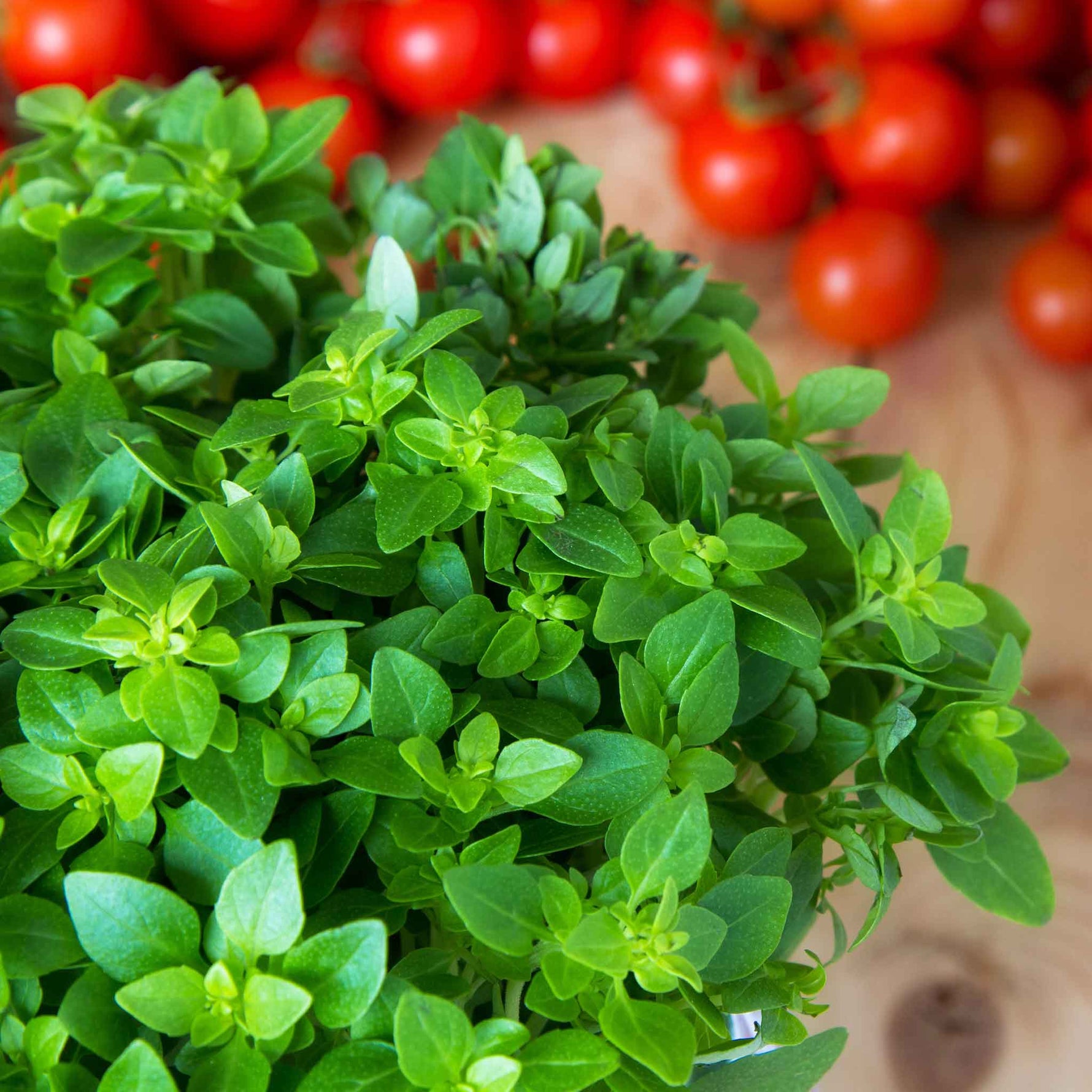
Dharaseeds
Oregano Seeds - Greek
Estimated delivery between April 15 and April 18.
Greek Oregano is a robust and aromatic herb, prized for its stronger, more intense flavor than other oregano varieties. Known for its compact growth and culinary excellence, this perennial herb thrives in Mediterranean climates and is perfect for adding rich, savory notes to a wide range of dishes. Whether used fresh or dried, Greek Oregano is a garden favorite for both its culinary uses and medicinal properties.
Key Benefits
- Stronger Flavor: Known for its bold and spicy taste, ideal for Mediterranean and Italian dishes.
- Medicinal Uses: Antibacterial, anti-inflammatory, and antioxidant properties.
- Drought-Tolerant: Highly resilient, requiring minimal water once established.
- Pollinator-Friendly: Attracts beneficial insects, including bees and butterflies.
Variety Features
- Plant Type: Perennial herb.
- Growth Habit: Compact and bushy, growing up to 18–24 inches tall.
- Leaves: Dark green, oval-shaped, and highly aromatic.
- Flowers: Small purple or pink blooms in late summer.
- Climate Adaptation: Thrives in USDA zones 4–9.
Planting Instructions
Planting Season
- Indoors: Start seeds 6–8 weeks before the last frost.
- Outdoors: Sow seeds after the last frost date or when soil is warm.
Planting Details
- Soil Requirements: Well-drained, sandy or loamy soil with a pH of 6.0–8.0.
- Sunlight: Prefers full sun but can tolerate partial shade.
- Spacing: Space plants 12–18 inches apart to allow for proper growth.
- Sowing Depth: Plant seeds ¼ inch deep in the soil.
Germination
- Temperature: Germination is best at 70°F (21°C).
- Time: Seeds should germinate within 10–14 days.
Care Instructions
- Watering: Water moderately, allowing soil to dry between waterings. Overwatering can lead to root rot.
- Fertilization: Minimal fertilization needed; too much can diminish flavor.
- Pruning: Regular trimming encourages a bushy plant and prevents premature flowering.
- Pest Management: Keep an eye out for aphids and spider mites, which can be controlled with organic insecticidal soap.
Harvesting Details
- Harvest Time: Begin harvesting leaves when the plant reaches about 6 inches in height.
- Harvest Method: Snip leaves or whole stems just above a leaf node to promote new growth.
Culinary Uses
- Italian and Mediterranean Dishes: Essential for pizza, pasta, salads, and marinades.
- Herbal Teas: Brew fresh or dried leaves for a flavorful and soothing tea.
- Preservation: Dry leaves for long-term storage to maintain flavor.
Conclusion
Greek Oregano is a superior variety of oregano, with a more intense flavor and a wider range of uses. Whether you're cultivating it for its bold culinary flavors or its medicinal properties, this hardy, low-maintenance herb is an essential addition to your garden. Grow Greek Oregano to elevate your cooking and enjoy its many health benefits throughout the year.








